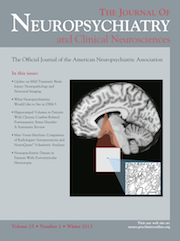Using Natural Zeolite as a Transporter of Dopamine
To the Editor: Attention deficit-hyperactivity disorder (ADHD) is a developmental disorder that causes problems in attention, monitoring, executive attention, and inhibition responses. Some areas with low activities have been identified in the central nervous system of children with ADHD by SPECT studies.1 One of them, the cortical-striatal-thalamic-cortical network, is known to be the area of dopamine concentration.1 Some evidence showed that the function of dopamine and serotonin are altered in ADHD.2 It is worth noting that anxiety is one of the symptoms that can exist in ADHD as a secondary feature.1
Zeolites are crystalline materials that have regular structure. This structure contains TO4 tetrahedra (T=Si and Al) that are linked by O-bridges and form the network of nano-pores. The internal volume of zeolites consists of channels that can have 1 to 3 dimensions, and their pore sizes range from 0.2 nm to 0.8 nm. Zeolites exist both in natural and artificial forms. The natural zeolites are used for many applications and have many properties such as cation concentration and exchange selectivity and can play a role in catalysis, adsorption, and separation systems.3
On the other hand, the effects of natural zeolites have been studied on neurons in experimental studies. One research study shows that the clinoptilolite zeolite and montmorillonite are effective to decrease stress and produce a soothing positive effect of sleep.4 Also, the effect of natural clinoptilolite has been studied on the serotonergic receptors in the brains of mice with mammary carcinoma. Zeolite Y is also used for determination and detection of dopamine and serotonin.5
We hypothesize that if natural zeolite is used as carrier of dopa into the brain, two advantages may be obtained: 1) increasing dopamine by dopa; and 2) decreasing stress by zeolite. Using this dopa, substituted-zeolite may diminish the side effects of administrating different drugs. Surely, clinical data must be collected to uphold the safety of this hypothesis.
1 : Kaplan & Sadock's Synopsis of Psychiatry: Behavioral Sciences/Clinical Psychiatry, 10th Ed., Baltimore, MD, Lippincott Williams & Wilkins, 2007Google Scholar
2 : Dopamine–serotonin interactions in attention-deficit hyperactivity disorder (ADHD). Prog Brain Res 2008; 172:543–565Crossref, Medline, Google Scholar
3 : Handbook of Zeolite Science and Technology. New York, Marcel Dekker, 2003, pp 17–19Crossref, Google Scholar
4 : Naturmineralien, Regulation, Gersundheit, 2nd Ed. Strasburg, Germany, Schibri-Verlag, 2007Google Scholar
5 : Voltametric determination of L-dopa using an electrode modified with trinuclear ruthenium ammine complex (Ru-red) supported on Y-type zeolite. Talanta 2004; 63:1083–1088Crossref, Medline, Google Scholar



